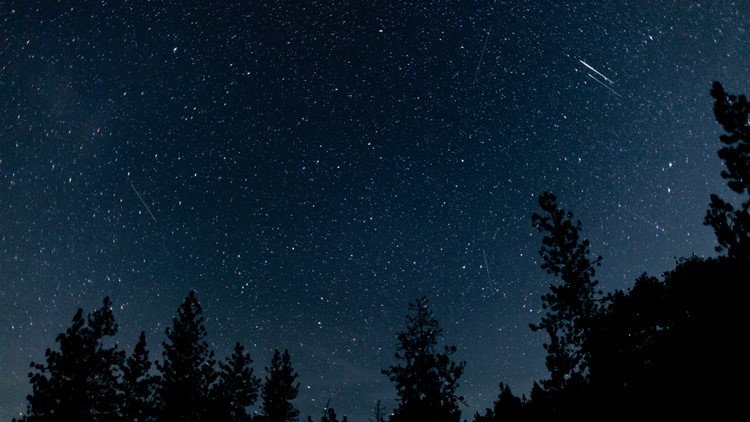TAMPA, Fla. — If you're outside at night this weekend, don't forget to look up — a meteor shower is peaking and it'll be visible across the Tampa Bay area.
According to the American Meteor Society, the Orionids meteor shower peaks over the weekend, but lasts through almost Thanksgiving. The meteors appear each year around this time because Earth enters an area of space littered with debris from Halley's Comet, according to NASA.
The Orionids are considered one of the "most beautiful showers" of the year, NASA says. The meteors are known for their brightness and speed — traveling about 148,000 mph into Earth's atmosphere, the agency says.
Because the Orionids are so fast, they can leave glowing "trains" — incandescent bits of debris — behind, which can last between just a few seconds to several minutes. If meteors go fast enough, they occasionally become fireballs, which will look like "prolonged explosions of light," NASA adds.
The American Meteor Society says the Orionids usually produce between 10-20 meteors per hour during "normal" years but have been known to have higher numbers during "exceptional" years. Right now, it's believed to be a "normal" year.
Peak Orionids time, tips to get the best view
According to forecasters, the Orionids will peak overnight Sunday, Oct. 22. NASA says the best hours to see it are just after midnight. This means you could start seeing them before midnight on Saturday, Oct. 21 through the overnight hours Sunday.
NASA suggests finding an area as far away from the city or street lights as possible in order to have the best, clearest view of the night sky. If you can, bring a sleeping bag, blanket or lawn chair to keep comfortable.
Lie flat on your back with your feet facing southeast and look up. Finding the Orion constellation, for which these meteors are named, might help you locate where in the sky to see the "shooting stars." Don't worry if you don't see anything right away — NASA says it'll take around 30 minutes for your eyes to adjust to the dark, but you should be able to start seeing meteors then.
The show lasts through dawn, so there will be plenty of time to see the Orionids.



